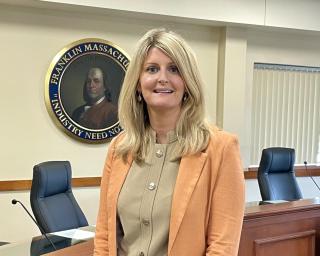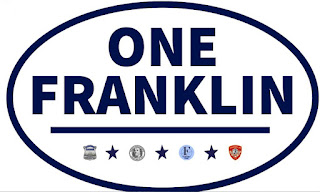To: Joint Budget Subcommittee
From: Jamie Hellen, Town Administrator
Amy Frigulietti, Deputy Town Administrator
Re: Preliminary Five-Year Fiscal Forecast Budget Model
Attached is the latest five-year fiscal forecast for Fiscal Year 2025 (FY25) through Fiscal Year 2029 (FY29). This is a preliminary model based on a series of assumptions outlined below. These assumptions are based on Proposition 2 ½, trends, market conditions and a couple strategic initiatives (mainly capital facility and infrastructure costs).
This forecast is only intended to be a guideline for strategic budget development and discussion. It is important to emphasize that if the Town has further needs for bond rating evaluations, items will need to be cut out of the budget in order to demonstrate to the ratings agencies a solvent, balanced budget.
The current FY24 Budget baseline is highlighted in light yellow. The five-year forecast is highlighted in light blue. The sections highlighted in light green will be the center of the discussion at the meeting and represent the most challenging areas in the next five years.
Revenue assumptions
The model makes the following revenue assumptions:
● New Growth - The model assumes $1,100,000 in annual New Growth revenue from year to year. Town policy is to use a ten-year aggregate average for annual new growth calculations. While this number will fluctuate, the town has seen a drop in private sector and residential homeowner property improvement investments in recent years. There is a lot of risk in the marketplace due to supply chain uncertainty, high interest rates, inflation, and increasing costs. The model assumes an increase in New Growth. In FY24, New Growth revenue is expected to decline. FY25 could see a similar decline.
For those interested in reading analysis about the Massachusetts economy, please take a look at the UMass Donahue Institutes’ MassBenchmarks series here. This publication represents a coalition of economic experts, including our state's most preeminent financial and academic
institutions, who publish their independent analysis of the Massachusetts economy.
● Tax Levy - The anticipated tax levy growth increases by 2.5% per year. Staff anticipates a reduction in the tax levy of approximately $630,000 over the next five years, due to debt exclusions “sunsetting” off the tax rolls as projects are paid off.
● Local Receipts - The model assumes a 2% growth in local receipts per year.
● State Aid - The model assumes a 1% growth in state aid per year. Education aid from the state has been well documented by the town for a decade. The public should not expect a large infusion of state education aid in the foreseeable future.
● Other Revenues - The model assumes a 2.5% increase in indirects per year. The model assumes a 2% increase in state assessments per year.
Expenses Assumptions
The model makes the following expenditure assumptions:
● Assumes a 2.5% Cost of Living Adjustment (COLA) for all municipal personnel line items each year for five years. Please note most union contracts, including FEA, Police, Fire, DPW, Custodian, and Library expire Summer of 2025. A 2.5% increase is modeled to stay within the tax levy.
● The Franklin Public School district budget increases 2.5% per year, or approximately $1.8 to $2 million per year.
● All municipal expense budgets increase 2.5% per year.
● Norfolk County Retirement System budget assumes a rate of growth at 5% and health care costs are projected at 7%.
● A full year assessment of $1.5 million for regional dispatch in FY25 and a rate of growth of 2.5% each year thereafter.
● Tri-County Vocational School building project estimated assessment of $2.1 annually for 30 years at an interest rate of 4.25%. The Town will have to consider funding this project through a debt exclusion vote at the ballot. A debt exclusion will increase taxes for citizens over the next 30 years in order to pay for the new school building. Tri-County is entering the Massachusetts School Building Authority (MSBA) process now and a districtwide authorizing vote (on the project, not the financing) is scheduled for October 24, 2023. The financial forecast illustrates in the light green section an increase of almost $2.1 million in FY27 for this building and a 2.5% increase in the following years. Given the construction and planning processes, this will likely not be the funding schedule. However,it is important to put this project in the model as a placeholder to illustrate costs as well as competing demands. It is important to note that if a debt exclusion is not passed or another financing mechanism is not found, the town will see structural cuts of about $2.1 million in FY27 and beyond.
● Includes anticipated borrowing for projects that were authorized by the Town Council in 2020, which includes the Washington Street sidewalk ($3 million), High School improvements ($2.5 million, including visitor bleachers), Remington-Jefferson remodel ($4 million), and recycling center ($4 million). These project estimates will need reauthorization to accommodate for a 25% increase in costs from the original 2020 authorization. Of note, these numbers are preliminary and could be greater, once finalized. Staff anticipated a 4+% interest rate for these projects, even with our AAA Bond Rating.
There is also $1 million authorized to borrow for the Parmenter School’s mechanical upgrades. This is NOT included in the model. A review of the costs to rehabilitate Parmenter needs to be explored at a deeper level, as Parmenter will need a new roof, mechanicals, and other improvements. If Parmenter is to maintain its use as a school for the foreseeable future (meaning 20-30 years), then the community should expect a complete upgrade of approximately $5 million. The Town will need to borrow for this project as well.
It is also important to reference that our staff capacity may not be able to coordinate this number of capital projects in such a short time. Also, the debt and interest line items have quickly decreased the last two fiscal years due to sunsetting debt exclusions and other borrowing coming off the books. The community is going to have to make some judicious decisons and prioritize projects in the coming years.
● Includes the borrowing for the Fire Department ladder truck, authorized earlier in the year.
What does this model NOT include?
A short list of items that have been discussed publicly in some variation (not in this order):
● Costs associated with the Police Station and Davis-Thayer Building. These projects will each cost tens of millions of dollars and will certainly require debt exclusion votes of the public to raise taxes (and then sunset).
● Additional strategic investments toward Franklin Public Schools.
● Additional public infrastructure costs for roads, sidewalks, parking lots, trails, and green energy commitments.
● $500,000-$1,000,000 in additional annual capital needs that have been requested to be put into the operating budget as annual operating costs, such as public safety protection gear, equipment, fleet, vehicles, and school curriculum.
● Funding relative to an increasing demand and reliance on technology. Whether it's cyber security, computers for students and/or employees, the proper recruitment and retention of exceptional technology staff, or required fiber and equipment upgrades, technology is a necessary cost driver. This is an area of significant underfunding, and the Town has not invested nearly enough in what is needed to build a sustainable technology environment.
● New investments in social services, regional transportation investments, personnel, clean energy, or any of the other requests the community may have.
● Off-budget accounts, such as utilities and community preservation.
Where do we go from here?
The community has several choices to address public school finance:
1. The municipal and school departments must live within the means of 2.5% revenue and expenditure growth. Ultimately, this presents challenging choices, but is the most sustainable option at the current time.
2. Work toward an override ballot question to permanently raise property taxes to pay for a defined set of service investments.
3. Shift resources from the municipal departments to the Franklin Public School Department.
4. Redesign the service delivery of the School Department. In other words, the District will reevaluate what services it offers, what is required, and what are the projections moving forward with cost drivers. One exercise that would prove valuable for the Franklin Public School District is to create a five to ten year strategic financial plan that addresses the balancing and shifting needs in public education with considerations given to the district's declining enrollment.
The model, as shown, illustrates a significant structural deficit in FY26 and beyond. FY25 also shows a deficit, but appears manageable, due to healthy local receipts and stable new growth. Barring any unforeseen global circumstance, FY25 will likely be manageable.
The community has a flood of expensive projects and competing demands coming up in a very challenging market to borrow money. The Town does not have any unused tax levy capacity, and has rebuilt its reserves to a baseline level in order to obtain a AAA Bond rating. Town and School reserves should not be withdrawn. While it may feel like a rainy day, it is not. The future likely holds more turbulent waters given the geopolitical state of our world.
The Town of Franklin (and the Commonwealth of Massachusetts) currently enjoys some of the best overall quality of life in the United States. As demonstrated again this month, it is rated as one of the safest communities in the country against violent crime. The community has an elite school district with exceptional teachers and educators, incredible special education services, championship athletics, and diverse extracurricular and recreational opportunities, a vibrant and jam-packed senior center, and a public library that is second to none. The community has worked hard to rebuild its most critical infrastructure over the past 2 decades to ensure quality and clean drinking water, great roads and sidewalks, exceptional parks and grounds, and to ensure the community has plenty of sewer capacity for the next several generations; hopefully another 100 years! The Town has preserved over 200 acres of open space in the last two years and has been awarded the highest bond rating at AAA for incredible financial management for the first time in the Town’s history.
The community enjoys a healthy, strong and supportive social fabric with events for all ages, economic classes and tastes. The Town has a robust diversity of retail shopping, restaurants, basic needs, social services support, and amenities. Franklin also enjoys a government that shows its citizens that it can act in compromise, humility and a dedicated focus on decisions that enhance the quality of life in the community. While many very difficult decisions will be here for the rest of the decade, we also think it is important that the community recognizes, and does not take for granted, the current state of the town.
The numbers to support this narrative along with the remainder of the package released for the August 2 meeting can be found ->
 |
| Preliminary Five-Year Fiscal Forecast Budget Model for the Joint Budget Subcommittee - Aug 2, 2023 |



